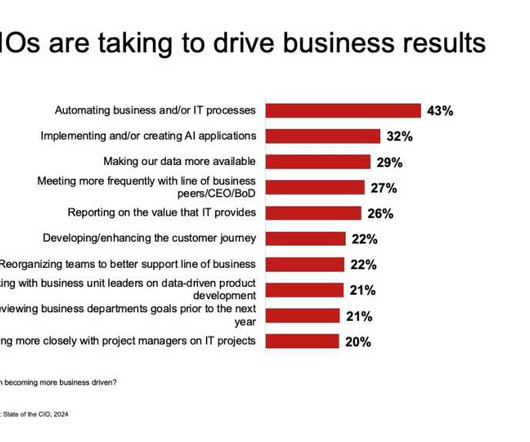Toyota transforms IT service desk with gen AI
CIO Business Intelligence
DECEMBER 8, 2023
Ballard is also the technology executive responsible for both the company’s battery electric vehicle (BEV) platform as it shifts to electrification, and its digital platform engineering and architecture organization, and he counts on conversational AI and generative AI as major components to transform HR and IT service requests.














Let's personalize your content